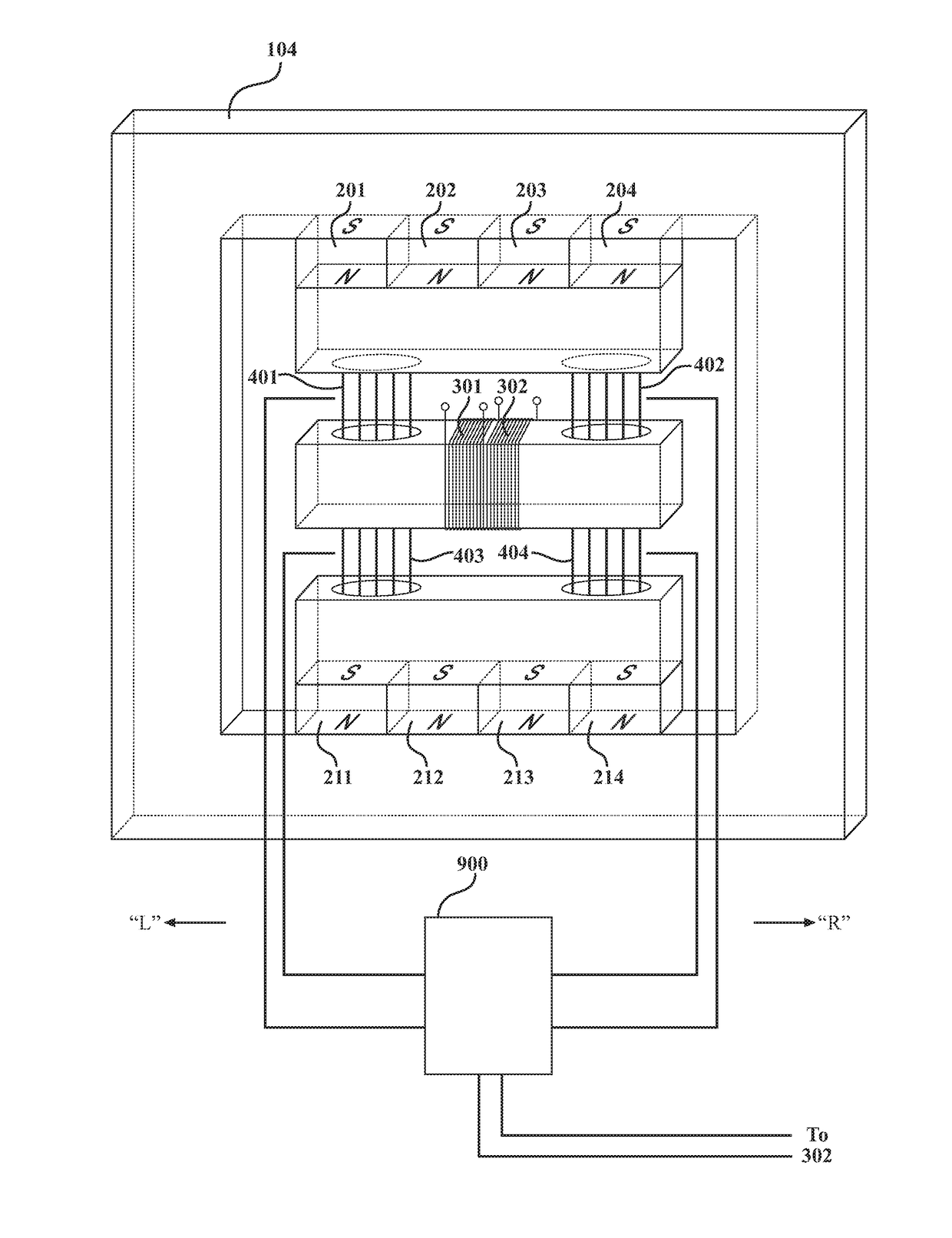Permanent magnet induction generator (PMIG)
a permanent magnet induction and generator technology, applied in the direction of variable transformers, inductances, variable inductances, etc., can solve the problems of flux bleed-through of resistance switches, and achieve the effects of low resistance, high magnetic permeability, and increased or decreased permeability
- Summary
- Abstract
- Description
- Claims
- Application Information
AI Technical Summary
Benefits of technology
Problems solved by technology
Method used
Image
Examples
Embodiment Construction
[0029]A preferred embodiment of the invention is illustrated in FIG. 1. “Right” and “left” orientations are shown in the figure with the understanding that these are arbitrary and for the purposes of description. The apparatus includes three magnetizable members, 101, 102, 103, defining a first region, a central region, and a second region, respectively. These magnetizable members have right and left ends. Around the central region there is wound an electrical conductor such as a coil or coils of wire, 301 and 302.
[0030]A contiguous backbone member of magnetizable material, 104, provides magnetic continuity for first and second sets of permanent magnets. A first magnet or set of permanent magnets, arranged in parallel at 201-204, that have their south pole(s) in contact with backbone member 104 and north pole(s) in contact with the first magnetizable member, 101. A second magnet or set of permanent magnets, 211-214, have a south pole in contact with the second magnetizable material ...
PUM
| Property | Measurement | Unit |
|---|---|---|
| switching frequency | aaaaa | aaaaa |
| switching frequency | aaaaa | aaaaa |
| switching frequency | aaaaa | aaaaa |
Abstract
Description
Claims
Application Information
 Login to View More
Login to View More - R&D
- Intellectual Property
- Life Sciences
- Materials
- Tech Scout
- Unparalleled Data Quality
- Higher Quality Content
- 60% Fewer Hallucinations
Browse by: Latest US Patents, China's latest patents, Technical Efficacy Thesaurus, Application Domain, Technology Topic, Popular Technical Reports.
© 2025 PatSnap. All rights reserved.Legal|Privacy policy|Modern Slavery Act Transparency Statement|Sitemap|About US| Contact US: help@patsnap.com



